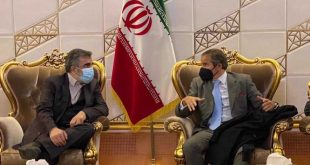Correction: We originally wrote the headline for this article as ‘Life expectancy for Aboriginals in Toronto is 37: report’. After more research, we learned this is not the case. As mentioned in the article, the sample size of the population was only 109 people who used community health and social services in Toronto. The average age of death – not life expectancy – for Aboriginal People who use attend these clinics is 37.
A new report by Anishnawbe Health Toronto, a centre with the goal of improving health and well-being of Aboriginal People, found that the people who attend one of four community health and social service clinics in Toronto die, on average, by age 37. To put that into context – the average age of death for all Toronto residents is 74. For Aboriginal men it is 34.
The largest group of aboriginals don’t live in scattered northern outposts – they live in the GTA. Some call Toronto the largest First Nation reserve in the country.
“I was absolutely shocked,” says Dr. Chandrakant Shah, who works with Anishnawbe and was one of the doctors who authored the report, to Kevin Newman Live. “I consider Toronto a mecca for health and social services, even when it comes to Aboriginal People. When I saw the number I couldn’t believe it.”
For Shah, 78, working at Anishnawbe is a retirement job. He started as a pediatrician and then moved into public health work.
Shah noticed years ago he was going to a lot of memorials and couldn’t believe how many people were in their 30s. He wondered if was just the memorials he was going to so he asked a coworker if they keep statistics on ages and deaths. Shah was then able to use the stats they had plus stats from three other Aboriginal health and social service centres in Toronto for the research. He says the deaths of so many young people keep him up at night.
“We don’t have a huge sample size (only 109 people from 2010 – 2012), but we think it is representative,” says Dr. Rajbir Klair, one of the reports’ authors, to Kevin Newman Live. “It’s a very low age, but there are a fair amount of kids and transients on the list plus a lot of the population is displaced or homeless.”
Shah, Klair and the third author, Dr. Allison Reeves were less concerned about the actual cause of death, which in most cases is related to poverty, but the root causes.
“I was interested in what their life was like,” Shah says. So in addition to the quantitative chart, they also did a qualitative analysis interviewing 20 people close to the deceased.
“I went to a residential school and the things that happened there – I can’t even talk about…that’s why I drank so much. I just couldn’t be a father,” said one of the people interviewed about what a deceased said.
“I really think it’s like a broken heart syndrome. It was [the deceased’s] loneliness for his true identity, like not knowing anything about who his people are because his family and his parents and his traditions were all lost,” said another.
The report shows much of the causes lie in the history of colonization, marginalization, discrimination and racism. Shah adds everything from treaties to the Indian Act result in losing cultures, languages and a way of living. Many of the deceased had a lack of housing, education and stable employment. This manifests in different ways such as finding happiness elsewhere such as drugs and alcohol.
“I call this a delayed tsunami effect,” says Shah. He suggests the only way to solve the problem is with an upstream approach of more housing and employment opportunities. “People have to have a sense of identity and empowerment.”
The report also suggests an increase in partnerships with the Aboriginal community and cultural competency training.
He says our policies are “screwed up” because most of us non-Aboriginals don’t know anything about Aboriginal issues and as a result there is no empathy. A lot of people don’t understand how some people can’t get a job or rent an apartment and this creates an empathy gap.
The group presented their findings in a report to Toronto City Council a few weeks ago.
“They (councillors) were pretty shocked,” says Klair. “Especially if you think we are in the Toronto area and have access to services.”
The report is asking for a multi-year plan with defined and measurable outcomes for public education, an employment strategy and for Aboriginals to be better represented on city agencies, boards and corporations.
The city has proclaimed 2014 to be the year of truth and reconciliation.
“The City values the contributions of the Aboriginal community in Toronto, many of whom are Residential School Survivors or their family members who have been affected by the legacy of the residential school system,” said Councillor Mike Layton in a statement last November. “This year-long proclamation acknowledges those injustices of the residential school system on Aboriginal peoples. It also adds to the ongoing work the City is doing to build strong working relationships with Aboriginal communities and partnerships for the development of successful programs and policies.”
So far nothing has changed as was recommended by the report, but Klair and Shah both know the gears move pretty slowly sometimes. Shah jokes about his age saying, “social changes don’t come quick, but I’m getting smarter and still have a lot of passion.”
Source: ctvnews
 WILAYAH NEWS VOICE OF THE GLOBAL AWAKENING
WILAYAH NEWS VOICE OF THE GLOBAL AWAKENING






